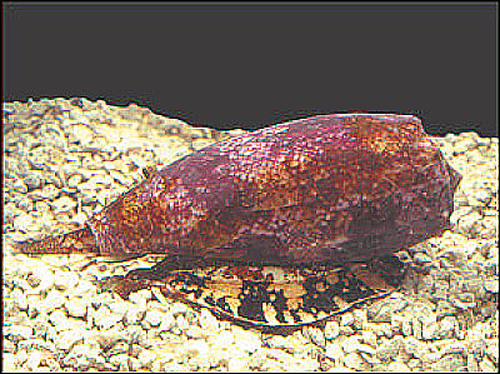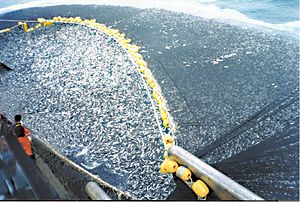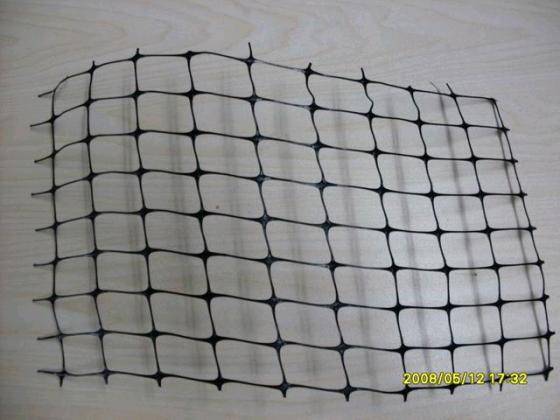Sunday, March 24, 2013
Whale Identification
Flukes are used to identify whales because they are easily noticeable and each species of whale has a very unique fluke that is unlike the other species. Scientists need this data in order to know what whale they are researching, otherwise their data would be very general. They can observe the movement of different species of whales to understand what those groups are doing and how they are reacting to their environment. The most difficult part of the whale identification lab was that the pictures used to identify the flukes weren't very clear so many of them were similar. The lab could be changed for the better by making either more flukes to identify or by making it harder to identify the flukes that were given because the lab was very short in and of itself.
Overfishing
Overfishing is a main concern in today's world because although it helps the economy in the short run, it destroys habitats and can result in a lack of fish in the ocean. This means that there will not enough fish to breed and produce the next generation of fish and it also disrupts the food chain. Overfishing affects my daily life because a lack of fish in the ocean and a disrupted food chain disrupts the food chain of the whole world, making a less plentiful source of food that we humans get from the ocean. Although overfishing seems like it would help the economy, it actually hurts it in the long run. One choice that I could make to help with this problem is that I could choose not to support organizations that partake in the practice of overfishing.
Monday, March 18, 2013
Ocean Trash
Cone Snail
- Common Name: Cone Snail
- Scientific Name: Conus magus
- Adaptations: sedative secretion,venom, and shell shape
- Hunting Strategies: Cones use a modified tooth that they shoot like a harpoon to kill prey.
- Reproduction: Sexually
- Interesting facts: The venom of the cone is strong enough to possibly kill a human

Sea Grass Adaptations
In acknowledgment to aerial beachcomber activity environments, seagrasses acquired well-developed stems, referred to as rhizomes. Blades grow from the basis or from branches basic at the rhizome. Roots extending from the basis additionally help in anchoring and absorbing up nutrients. The ribbon-shaped grass blades are flexible, angling with any movement. Air spaces extending through the blades, rhizomes, and roots provide flotation mechanisms. Sea grass provides aliment to animals by being directly eaten, or accepting the algae that grows on it eaten off. There are different types of organisms in the sea grass ambiance like residents, who live in the sea grass migrants, who drift to the sea grass circadian and frequently, and travelers, who appointment seasonally.
Sea Grasses
Monday, March 4, 2013
Marine Video Issue
Sunday, March 3, 2013
Pollution
- Monofilament: This type of fishing line is extremely difficult to spot when submerged in water. Fish, birds, and other marine life can easily become entangled, causing starvation, amputation, and even death. Ingestion is also a serious threat to wildlife. Monofilament lines also present a risk to swimmers and scuba divers.
- Entanglement: Can physically harm animals that live in the ocean.
- Plastic Bags: Plastic bags are considered especially dangerous to sea turtles, who may mistake them for jellyfish, a main food source. Plastic bags that enter our marine environment eventually break down into small fragments.
- Ghost Fishing: The lost or abandoned fishing gear that continues to catch fish. It is environmentally detrimental and the fish caught is wasted.
- Plastic Pellets: Many marine birds and animals mistakenly eat free-floating plastic and plastic does not biodegrade.
Benefits of Mangroves
- Nursery: Mangroves are fish nurseries as they serve as a source of food for fish, shrimp and crabs that live in rivers and the shallow areas of the sea/ocean, and provide a safe haven for fish, shrimp and crab.
- Nutrients: Mangroves absorb excess nutrients from runoff and recycle nutrients back into the environment.
- Sediment: Mangroves act as a sediment trap, thereby assisting in the accretion of coastal sediments and further adding to the protection of low-lying inland areas.
- Toxins: Mangrove roots filter out the toxins from water before it enters the sea which provides for healthier water, leading to more fish which is beneficial to the commercial fishing industry.
- Buffer System: Mangrove forests leave a corridor along the beach that protects buildings from wind, waves, and tides and allows animals to migrate.
- Ecosystem Corridor: This allows animals, plants and ecological processes to move from one habitat to another which helps in their development and protects them from predators
Mangrove Adaptations
•Mangroves have the ability to exclude salts through filtration at the surface of the root. These root membranes prevent salt from entering while allowing the water to pass through.
•Mangroves are salt excreters remove salt through glands located on each leaf.
•Mangrove trees are adapted for survival in oxygen-poor or anaerobic sediments through specialized root structures.
• Red mangroves have prop roots extending from the trunk and adventitious roots from the branches allowing them to live in anaerobic soils.
•Black mangroves have pneumatophores which are small air roots that can be seen extending vertically from the soils surrounding the trunk.
•Mangroves are salt excreters remove salt through glands located on each leaf.
•Mangrove trees are adapted for survival in oxygen-poor or anaerobic sediments through specialized root structures.
• Red mangroves have prop roots extending from the trunk and adventitious roots from the branches allowing them to live in anaerobic soils.
•Black mangroves have pneumatophores which are small air roots that can be seen extending vertically from the soils surrounding the trunk.
Friday, March 1, 2013
Crab-eating Frog
•Scientific Name: Fejervarya cancrivora
•Common Name: Crab-eating Frog
•Habitat: Native to southeast Asia
•Reproduction: Sexual
•Prey: Like the name suggests, the crab-eating frog's main prey consists of crabs.
•Interesting Facts: The crab-eating frog is favored for its eating quality and is often farmed for its edible legs. It can tolerate marine environments by increasing its urea production and retention. It is one of the few frogs that can tolerate brackish water.
•Why: I chose this organism because I thought that it was very interesting that a frog was able to eat crabs whole and I wanted to learn more about them.
•Common Name: Crab-eating Frog
•Habitat: Native to southeast Asia
•Reproduction: Sexual
•Prey: Like the name suggests, the crab-eating frog's main prey consists of crabs.
•Interesting Facts: The crab-eating frog is favored for its eating quality and is often farmed for its edible legs. It can tolerate marine environments by increasing its urea production and retention. It is one of the few frogs that can tolerate brackish water.
•Why: I chose this organism because I thought that it was very interesting that a frog was able to eat crabs whole and I wanted to learn more about them.
Subscribe to:
Comments (Atom)





























